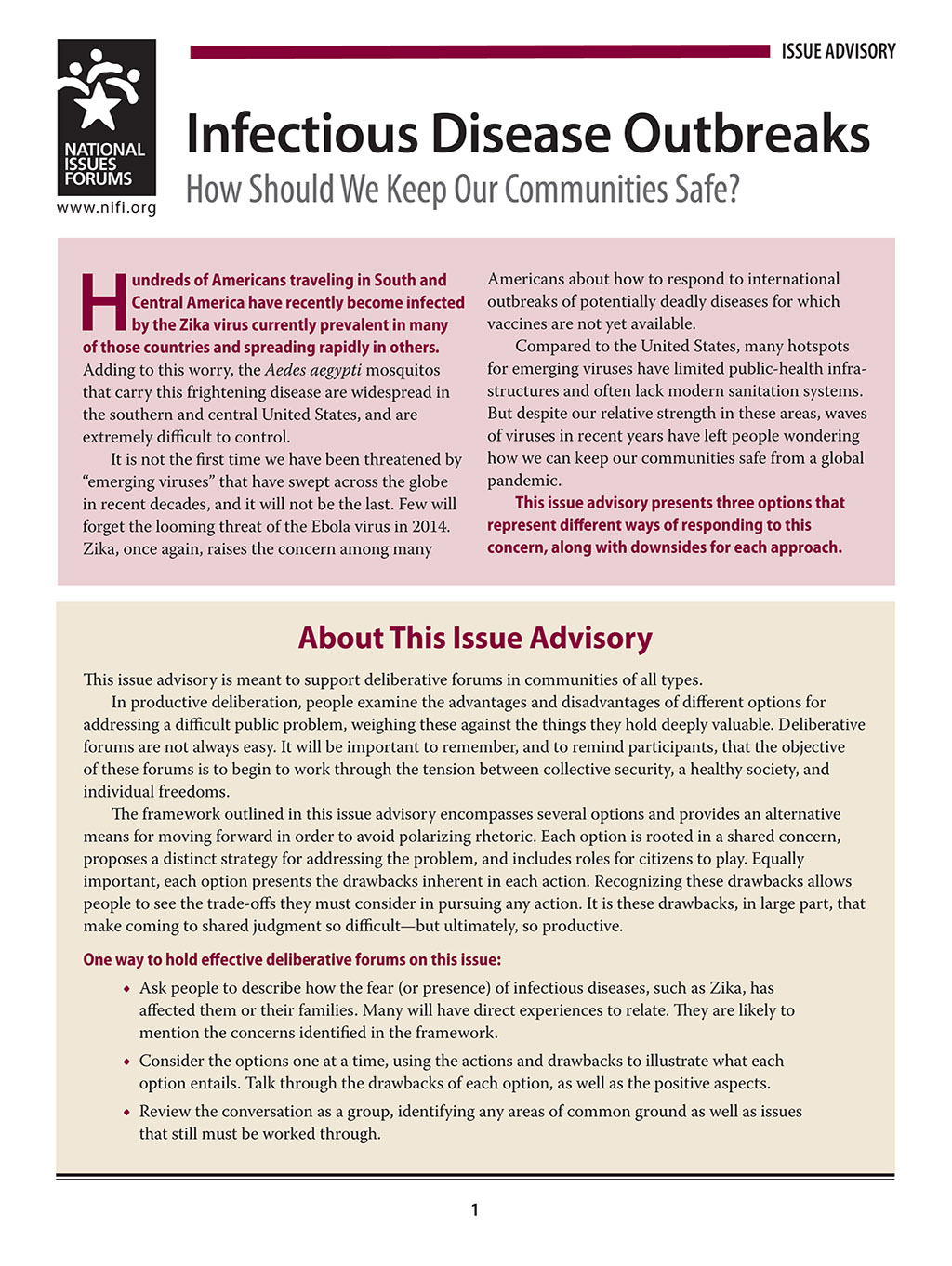Issue Advisory - "Infectious Disease Outbreaks: How Should We Keep Our Communities Safe?"
Blog Category:
A new issue advisory is available as a free pdf download. The 4-page advisory titled, Infectious Disease Outbreaks: How Should We Keep Our Communities Safe? presents three options for consideration.
Click here for more info and link to download.
Option One: Enforce Safety Rules
In an interconnected world, diseases we have never heard of could easily invade our communities. As the US Centers for Disease Control puts it, "An outbreak of infectious disease is just a plane ride away." This option holds that we must be prepared to take strong measures to keep our communities safe from such outbreaks. Such measures in China, the United States, and other countries, were used to successfully contain an outbreak of Severe Acute Respiratory Syndrom (SARS) in 2003.
Option Two: Stamp It Out at the Source
The procedures and capabilities in place in the United States are probably sufficient to manage the spread of Zika and similar infectious diseases within our country, if necessary. But to prevent them from reaching us, such diseases need to be contained in the countries from which they emerge. We must significantly increase our efforts to work with other nations to address public-health crises when and where they arise. It is not enough to wait until infectious diseases cross our own borders while making only halfhearted attempts to address the crisis where it starts.
Option Three: Emphasize Prevention and Preparation in the Community
In this view, we have become too complacent, believing our society to be too highly developed to be at real risk of a serious disease outbreak. As a result, on a collective level as well as an individual level, we have placed our communities at great risk. Public-health and research budgets are shrinking. Lower income neighborhoods, which can have sanitation challenges and reduced access to health care, are especially at risk. We should put precautions, protocols, and technology in place to respond swiftly to outbreaks, both at the care and research levels.

